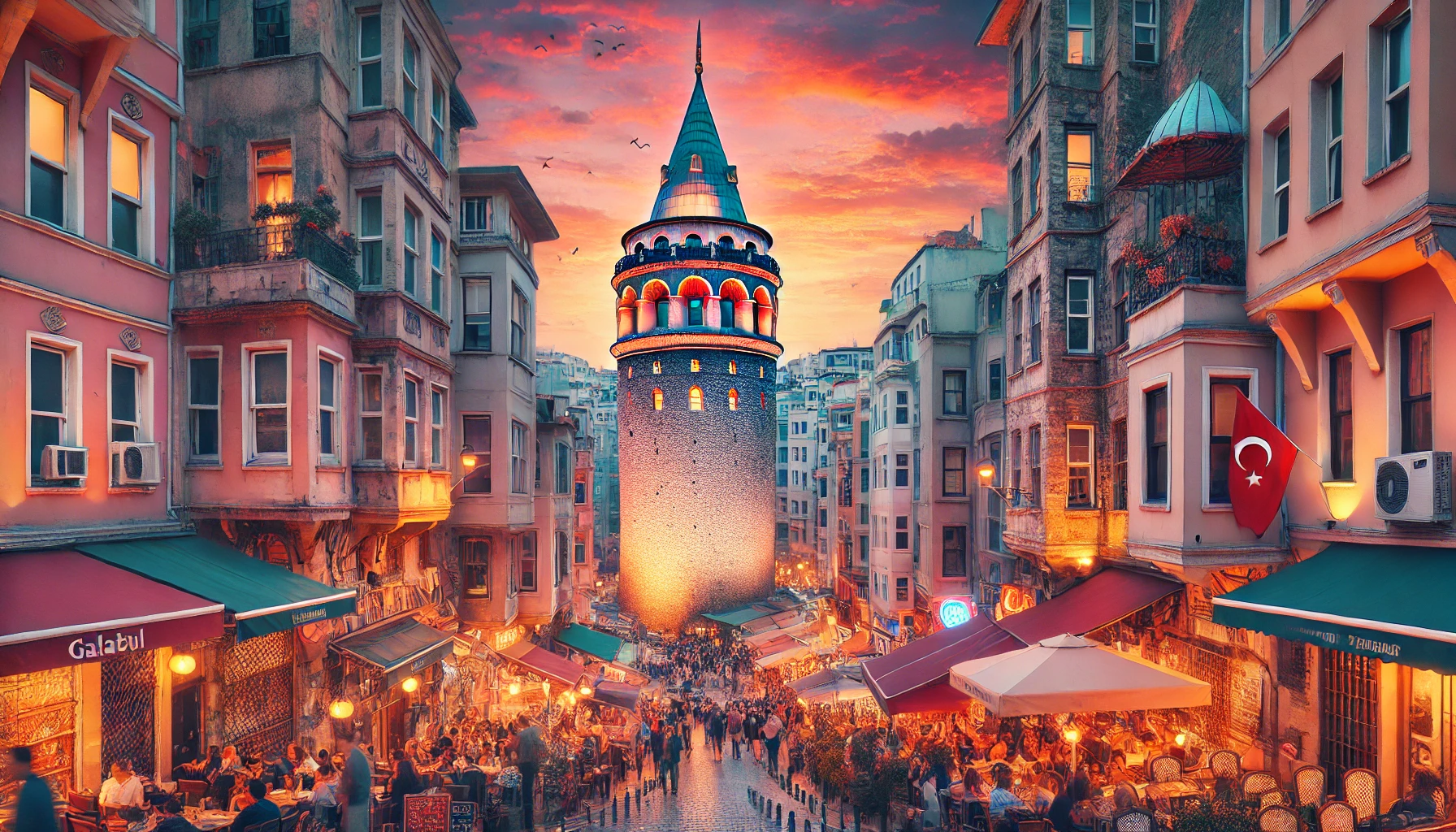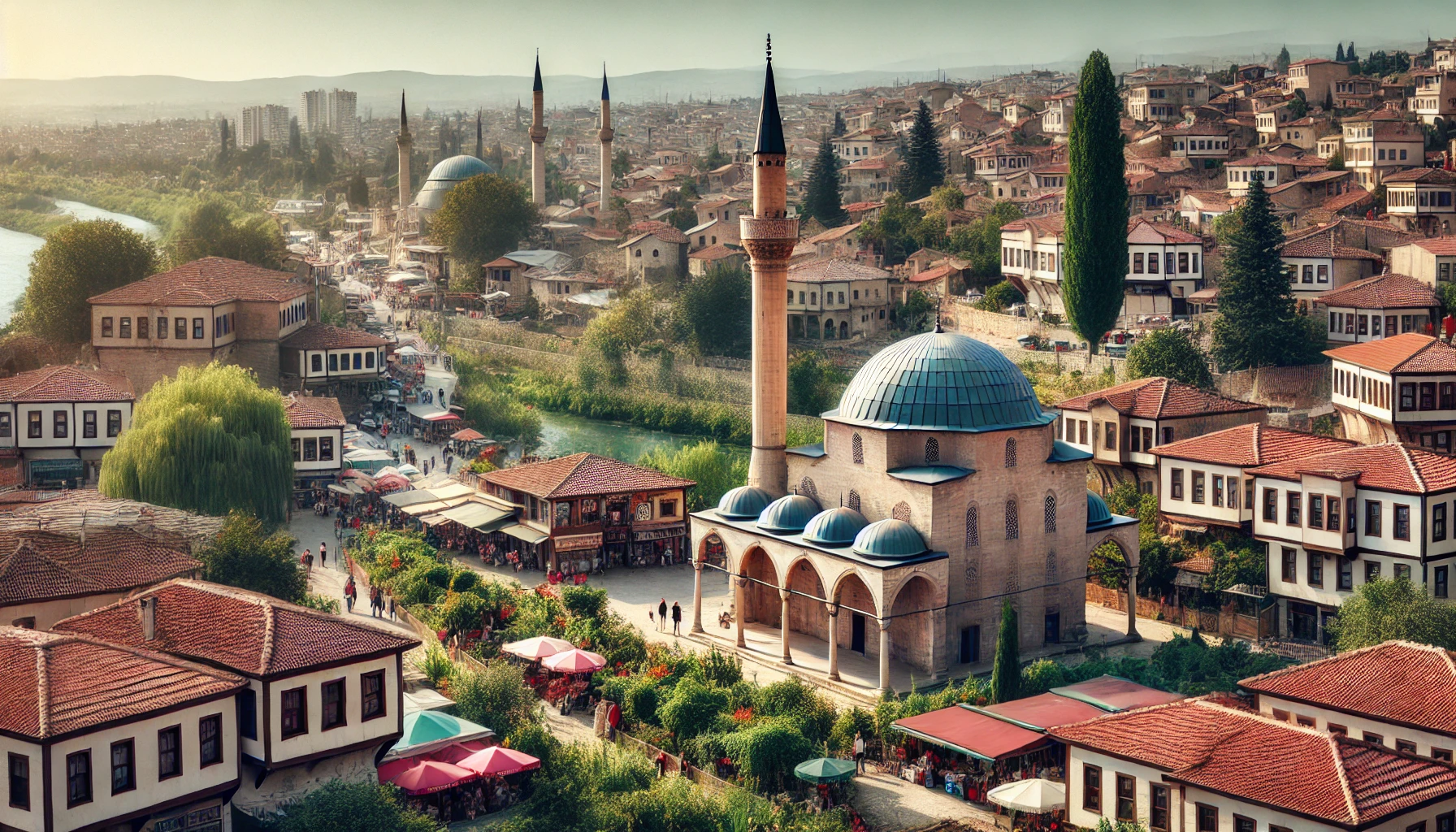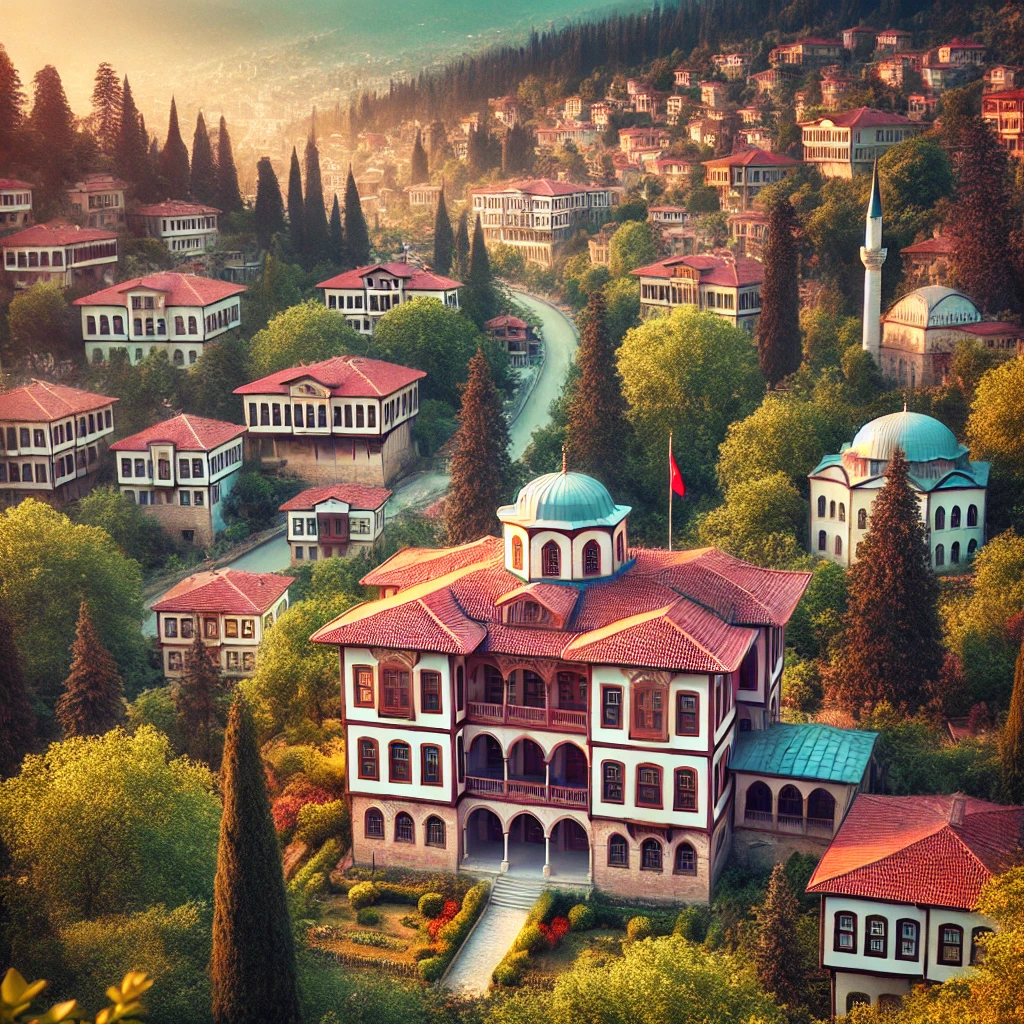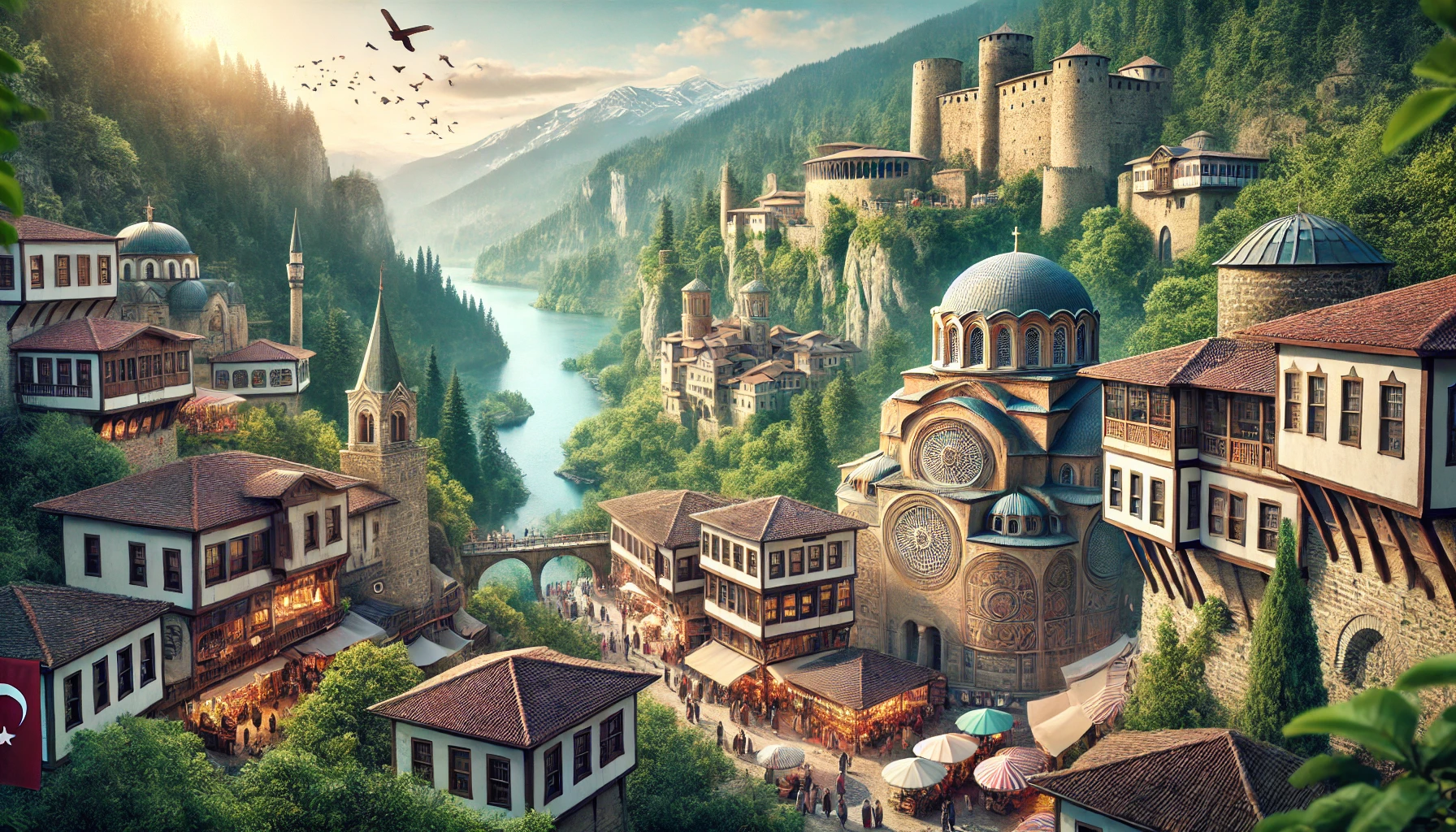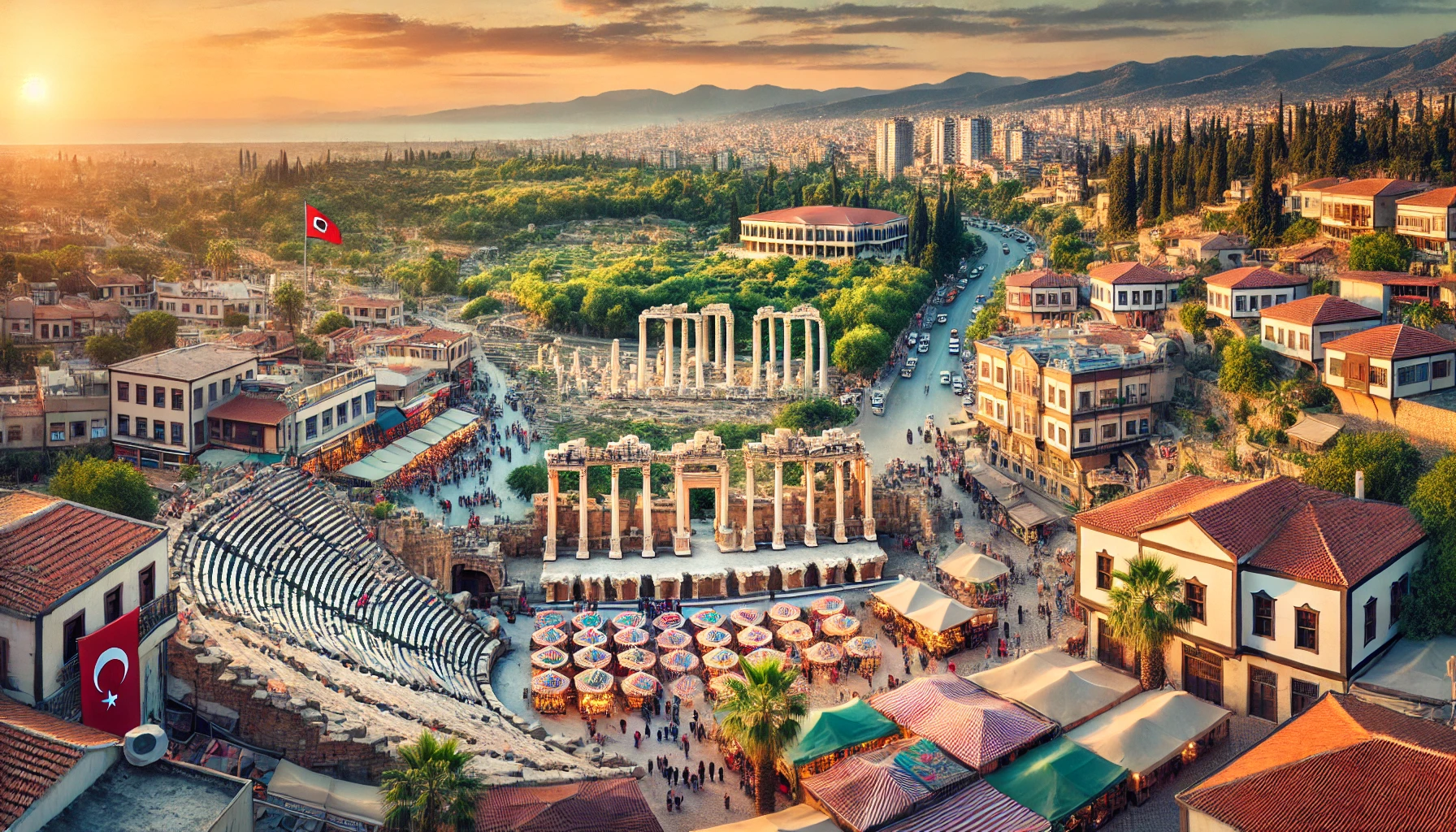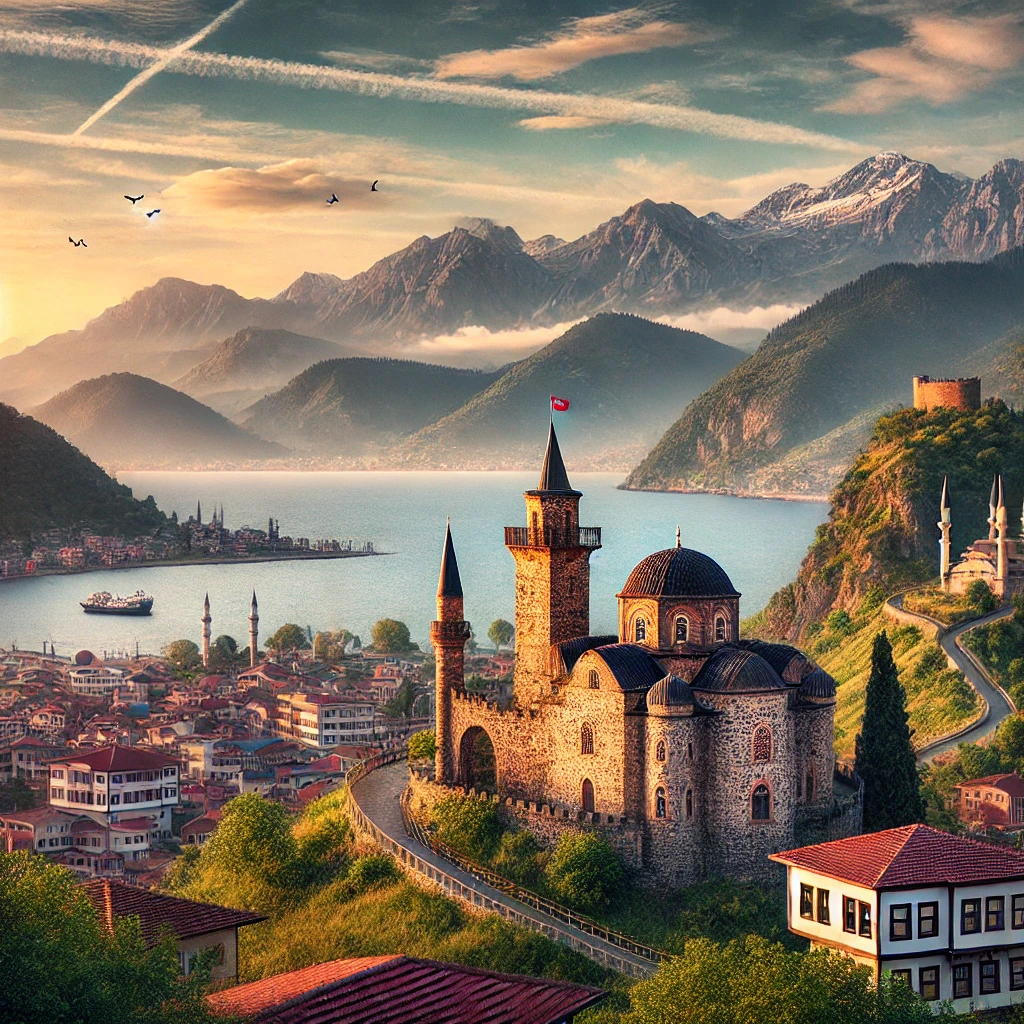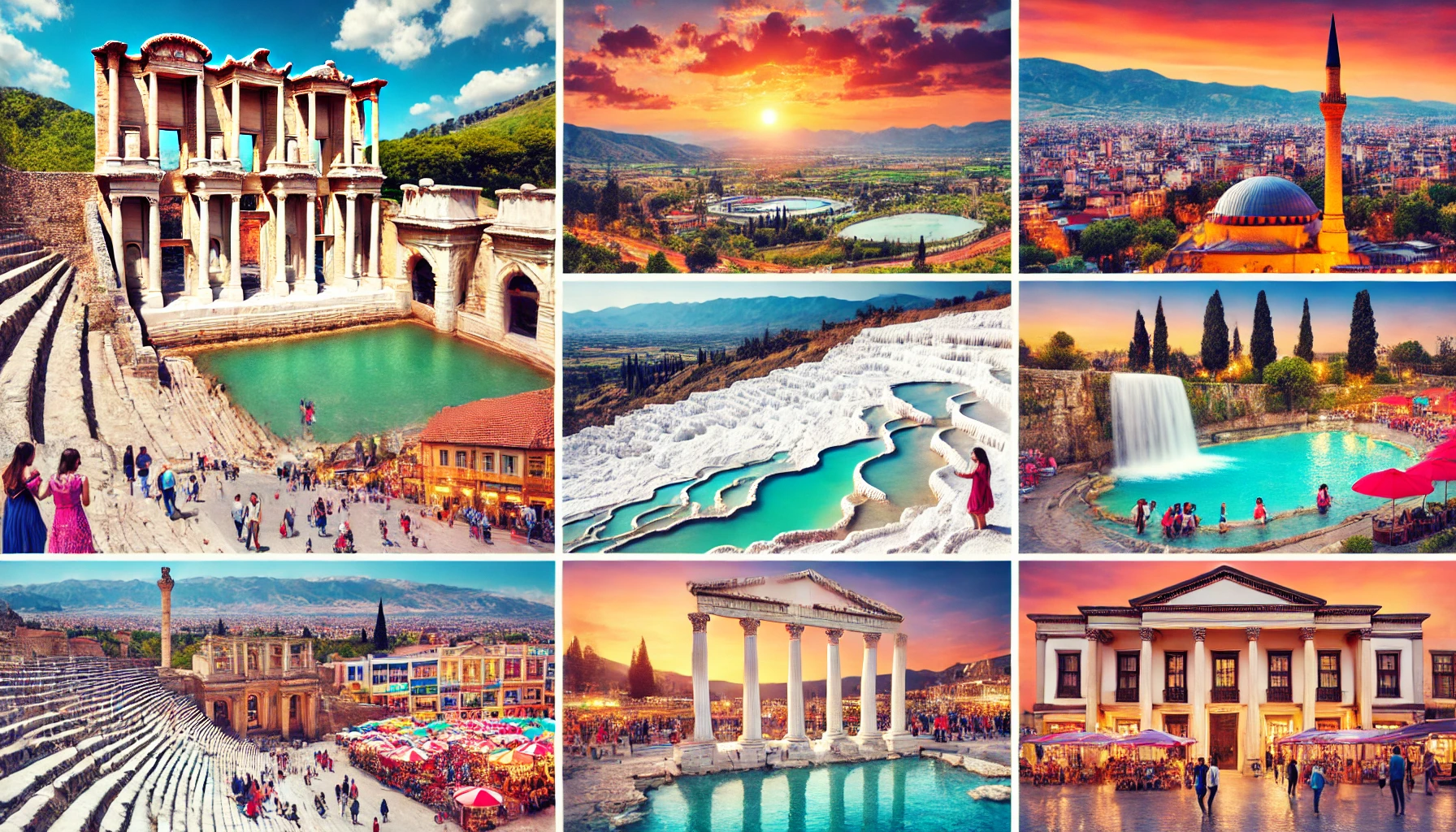Galata Tower: A Symbol of Istanbul's Rich Heritage and Panoramic Beauty
The Galata Tower, known in Turkish as Galata Kulesi, is one of Istanbul’s most iconic landmarks and a must-visit for anyone exploring the city. Perched on the northern shore of the Golden Horn in the bustling district of Beyoğlu, this historic tower offers breathtaking panoramic views of Istanbul and its surroundings. But beyond its stunning vistas, Galata Tower holds a rich tapestry of history, culture, and architectural marvel that has intrigued locals and visitors alike for centuries. In this article, we’ll delve into the fascinating story of Galata Tower, from its ancient beginnings to its current status as a museum and tourist attraction, providing a comprehensive guide for travel enthusiasts eager to explore this enchanting site.
Historical Background: From Byzantium to the Ottomans
Byzantine Beginnings: The Tower of Christ
The origins of Galata Tower can be traced back to the Byzantine period. It is believed that Emperor Justinian first erected a structure in the area where Galata now stands, though this early tower was later destroyed. The location held strategic importance due to its vantage point overlooking the Bosphorus, making it an ideal site for a watchtower.
In 1348, during the expansion of a Genoese colony in the Galata district, the current structure was built. Known as Christea Turris (Tower of Christ) in the Romanesque style, it became a significant part of the city’s defenses. The Genoese colony was a fortified settlement, and Galata Tower stood as the tallest building in Constantinople at the time, symbolizing the Genoese influence and their maritime prowess.
Key Highlights:
- Genoese Legacy: Galata Tower was constructed as a part of the defensive walls of the Genoese colony, serving both military and civic functions.
- Architectural Influence: The Romanesque design reflects the European architectural influences brought by the Genoese merchants and settlers.
Ottoman Era: A New Role for the Tower
With the Ottoman conquest of Constantinople in 1453, Galata Tower’s role shifted. The Genoese were allowed to remain, but their fortress-like walls were eventually dismantled as the city expanded. The Ottomans repurposed Galata Tower, initially using it as a prison and later as a watchtower to spot fires in the city.
One of the most captivating tales from this era involves Hezarfen Ahmed Çelebi, who, in 1638, allegedly flew from the tower across the Bosphorus to Üsküdar using artificial wings. This story, recounted by the famous Ottoman traveler Evliya Çelebi, adds a mythical layer to the tower’s history, although its authenticity is often debated.
Key Highlights:
- Fire Watchtower: The tower served as a crucial lookout for fires, a frequent hazard in the wooden structures of Ottoman Istanbul.
- Hezarfen’s Flight: The legendary flight of Hezarfen Ahmed Çelebi highlights the tower’s place in Ottoman folklore and its cultural significance.
Modern Era: Restoration and Tourism
The 19th century brought significant changes to Galata Tower. Following several fires and a destructive storm in 1875 that damaged its roof, the tower underwent multiple restorations. It remained without a conical roof until the 1960s when a major restoration project replaced the wooden interior with concrete and restored the iconic roof structure.
In 2020, the tower was reopened as the Galata Tower Museum, following extensive renovations that preserved its historical essence while enhancing its role as a cultural attraction. Today, it stands as a symbol of Istanbul, drawing tourists from around the world to enjoy its unparalleled views and explore its storied past.
Key Highlights:
- Restoration Projects: Major restorations in the 20th century helped preserve the tower’s structure and historical integrity.
- Cultural Icon: Galata Tower’s transformation into a museum highlights its importance as a cultural and historical landmark in Istanbul.
Architectural Features: A Romanesque Marvel
Exterior Design: A Blend of Styles
Galata Tower’s architectural design is a blend of Romanesque and medieval influences, reflecting the diverse cultural interactions that have shaped Istanbul over the centuries. The tower’s cylindrical structure, thick stone walls, and conical roof are characteristic of Romanesque architecture, which was prevalent in Europe during the 11th and 12th centuries.
Key Features:
- Cylindrical Structure: The tower’s imposing cylindrical form is a defining feature, offering both aesthetic appeal and functional strength.
- Stone Masonry: Built with robust stone masonry, Galata Tower’s walls are approximately 3.75 meters thick, providing durability and protection against natural and human-made threats.
Interior Layout: From Medieval to Modern
Inside Galata Tower, visitors can explore nine floors, each offering unique insights into its historical and cultural significance. The tower’s interior has been modernized with concrete reinforcements, yet it retains a sense of medieval charm through its narrow staircases and historical exhibits.
Key Features:
- Observation Deck: Located at 51.65 meters above ground, the observation deck offers a 360-degree panoramic view of Istanbul, making it a prime attraction for visitors.
- Exhibition Spaces: The tower houses exhibitions that detail its history, including artifacts, photographs, and multimedia displays that bring its past to life.
Dimensions and Statistics
- Height: 62.59 meters (205.3 feet) excluding the ornamental top.
- Observation Deck Height: 51.65 meters (169.5 feet).
- Base Diameter: 16.45 meters (54.0 feet).
- Interior Diameter: 8.95 meters (29.4 feet).
- Wall Thickness: 3.75 meters (12.3 feet).
The Legend of Hezarfen Ahmed Çelebi: A Flight into Myth
The Mythical Flight
One of the most captivating stories associated with Galata Tower is the legendary flight of Hezarfen Ahmed Çelebi. According to Ottoman traveler and historian Evliya Çelebi, in 1638, Hezarfen strapped on a pair of artificial wings and launched himself from the tower, gliding over the Bosphorus to Üsküdar on the Asian side of the city.
While the story is often regarded as myth, it has captured the imagination of many, symbolizing human ingenuity and the eternal desire to conquer the skies. Today, Hezarfen’s flight is celebrated as a significant event in Turkish folklore, reflecting the rich tapestry of stories that surround Galata Tower.
Key Highlights:
- Symbol of Innovation: Hezarfen’s flight represents the spirit of innovation and exploration that defines much of Istanbul’s history.
- Cultural Impact: The tale has inspired numerous artistic and literary works, cementing its place in Turkish cultural heritage.
The Reality Behind the Legend
Despite its mythical status, the story of Hezarfen Ahmed Çelebi raises intriguing questions about the possibilities of early human flight. While historical evidence is scant, the legend continues to inspire discussions about the boundaries of human achievement and the enduring allure of flight.
Key Highlights:
- Scientific Speculation: Scholars have debated the feasibility of Hezarfen’s flight, examining historical accounts and aerodynamic principles.
- Legacy of Exploration: Regardless of its authenticity, the story underscores Istanbul’s long-standing tradition of exploration and discovery.
Exploring Galata Tower: What to See and Do
The Observation Deck: A Panoramic Vista
One of the main attractions of Galata Tower is its observation deck, which offers stunning 360-degree views of Istanbul. From this vantage point, visitors can see the sprawling cityscape, the shimmering waters of the Bosphorus, and iconic landmarks such as the Hagia Sophia and the Blue Mosque.
Key Highlights:
- Unparalleled Views: Capture breathtaking photographs of Istanbul’s skyline and iconic sights from the observation deck.
- Golden Horn and Bosphorus: Enjoy panoramic views of the Golden Horn and Bosphorus, providing a unique perspective on Istanbul’s geography.
The Galata Tower Museum: A Journey Through Time
The Galata Tower Museum offers an immersive experience into the history and cultural significance of the tower. Through interactive exhibits, historical artifacts, and multimedia presentations, visitors can explore the tower’s past and its role in shaping Istanbul’s identity.
Key Highlights:
- Historical Exhibits: Discover the rich history of Galata Tower through detailed exhibits and informative displays.
- Cultural Artifacts: View artifacts and relics that showcase the tower’s historical and cultural significance.
Dining and Entertainment: A Taste of Istanbul
Galata Tower is not just about history and views; it also offers a delightful culinary experience. The tower’s restaurant and café provide visitors with the opportunity to enjoy traditional Turkish cuisine while taking in the stunning views of Istanbul.
Key Highlights:
- Traditional Cuisine: Savor authentic Turkish dishes and beverages at the tower’s restaurant, offering a taste of Istanbul’s culinary heritage.
- Evening Entertainment: Experience live music and cultural performances, adding a touch of entertainment to your visit.
The Surrounding Area: Exploring Beyoğlu and Beyond
Beyoğlu District: A Cultural Hub
Galata Tower is located in the vibrant district of Beyoğlu, known for its lively atmosphere, cultural attractions, and artistic flair. This area is a melting pot of history and modernity, offering a wealth of experiences for visitors to explore.
Key Highlights:
- Istiklal Avenue: A bustling pedestrian street filled with shops, cafés, and art galleries, perfect for a leisurely stroll.
- Art and Culture: Explore Beyoğlu’s rich cultural scene, with theaters, museums, and live performances showcasing the best of Istanbul’s artistic talent.
Nearby Attractions: Discovering Istanbul’s Gems
In addition to Galata Tower, the surrounding area boasts several attractions worth visiting, each offering a unique glimpse into Istanbul’s diverse heritage.
Key Highlights:
- Galata Bridge: A historic bridge connecting Beyoğlu to the Old City, offering picturesque views and a lively fishing scene.
- Karaköy: A trendy neighborhood known for its vibrant café culture, boutique shops, and contemporary art galleries.
Exploring Istanbul: Tips for Travelers
As you plan your visit to Galata Tower and explore Istanbul, here are some practical tips to enhance your travel experience:
Key Tips:
- Getting There: Galata Tower is easily accessible by public transportation, including trams and buses, making it convenient for travelers.
- Best Time to Visit: To avoid crowds, consider visiting the tower early in the morning or later in the afternoon.
- Cultural Etiquette: While Istanbul is a modern city, respecting local customs and traditions will enrich your visit and interactions with locals.
The Symbol of Istanbul: Galata Tower in Art and Culture
Galata Tower in Literature and Art
Galata Tower’s iconic silhouette has inspired countless artists, writers, and poets, making it a prominent symbol in Turkish literature and art. Its presence in various forms of creative expression highlights its enduring impact on Istanbul’s cultural identity.
Key Highlights:
- Literary References: Explore how Galata Tower has been portrayed in Turkish literature, from classical poetry to contemporary novels.
- Artistic Depictions: Discover the tower’s representation in paintings, photographs, and films, showcasing its timeless allure.
The Role of Galata Tower in Istanbul’s Identity
As a symbol of Istanbul, Galata Tower holds a special place in the hearts of locals and visitors alike. Its historical significance, architectural beauty, and panoramic views make it an emblem of the city’s rich heritage and dynamic spirit.
Key Highlights:
- Cultural Significance: Understand how Galata Tower represents the fusion of cultures and histories that define Istanbul.
- Iconic Landmark: Explore the tower’s role as a landmark that embodies Istanbul’s unique blend of tradition and modernity.
Preserving Galata Tower: Conservation Efforts
Preserving Galata Tower’s historical and cultural value is a priority for Istanbul’s authorities. Conservation efforts ensure that this iconic structure remains a cherished part of the city’s landscape for future generations.
Key Highlights:
- Restoration Projects: Learn about the initiatives undertaken to maintain and restore Galata Tower’s architectural integrity.
- Cultural Heritage: Explore the importance of preserving Galata Tower as a cultural heritage site and its impact on Istanbul’s tourism industry.
Plan Your Visit: Practical Information and Tips
Visiting Galata Tower: What You Need to Know
Before embarking on your journey to Galata Tower, it’s essential to gather practical information to make the most of your visit. From opening hours to ticket prices, here are the key details you need to know:
Key Information:
- Opening Hours: Galata Tower is open daily, with extended hours during peak tourist seasons. Check the official website for current timings.
- Ticket Prices: Admission fees vary for adults, students, and children. Consider purchasing tickets online to avoid long queues.
Accessibility and Facilities
Galata Tower is equipped with modern amenities to ensure a comfortable and accessible experience for all visitors. From elevators to guided tours, here’s what you can expect during your visit:
Key Features:
- Elevator Access: The tower is equipped with elevators to accommodate visitors with mobility challenges.
- Guided Tours: Join guided tours to gain deeper insights into the tower’s history and significance.
Exploring Nearby Attractions
Make the most of your visit to Galata Tower by exploring the nearby attractions and experiences that Istanbul has to offer. From historical sites to cultural events, there’s something for everyone to enjoy:
Key Attractions:
- Istanbul Modern: Discover contemporary art at Istanbul Modern, a short distance from Galata Tower.
- Historical Landmarks: Explore other iconic landmarks such as the Hagia Sophia and the Blue Mosque, easily accessible from Beyoğlu.
Local Cuisine: A Culinary Adventure
No visit to Istanbul is complete without indulging in its rich culinary delights. While exploring Galata Tower and its surroundings, treat yourself to the flavors of Turkish cuisine:
Key Recommendations:
- Traditional Dishes: Savor classic dishes such as kebabs, mezes, and baklava at local eateries.
- Street Food: Experience Istanbul’s vibrant street food scene with delights like simit, döner, and Turkish tea.
Conclusion: A Timeless Journey Through Galata Tower
Galata Tower stands as a testament to Istanbul‘s rich history and cultural diversity, offering visitors a unique glimpse into the past while providing breathtaking views of the city’s present. As you explore its ancient halls and gaze upon the panoramic vistas from its observation deck, you’ll be captivated by the stories and legends that have shaped this iconic landmark.
Whether you’re a history enthusiast, an art lover, or a curious traveler, Galata Tower promises an unforgettable experience that will leave you with a deeper appreciation for Istanbul’s timeless beauty and vibrant spirit. From its storied past to its modern allure, Galata Tower invites you to embark on a journey through time and discover the heart of Istanbul.
Latest Update: Aug 4, 2024
Your Content Goes Here
Discover Galata Tower, Istanbul on the Map
Galata Tower, Istanbul
TAGS: architecture, Galata Tower, Galata Tower Beyoğlu, Galata Tower exhibitions, Galata Tower history, Galata Tower Istanbul, Galata Tower legend, Galata Tower museum, Galata Tower panoramic view, Galata Tower restoration, Galata Tower visiting tips, Genoese tower, Hezarfen Ahmed Çelebi, historical site, Istanbul, Istanbul attractions, Istanbul landmarks, Istanbul sightseeing, Istanbul tourist attractions, Istanbul travel guide, Ottoman architecture, panoramic views, things to do in Istanbul, tourism, travel, Turkey, Turkish culture, visit Turkey
A brief summary of the key points in this article.
Latest Travel Guides
Weather Today in Galata Tower, Istanbul, Turkey
Location: Istanbul
Temperature: 15.09°C
Condition: Broken clouds

